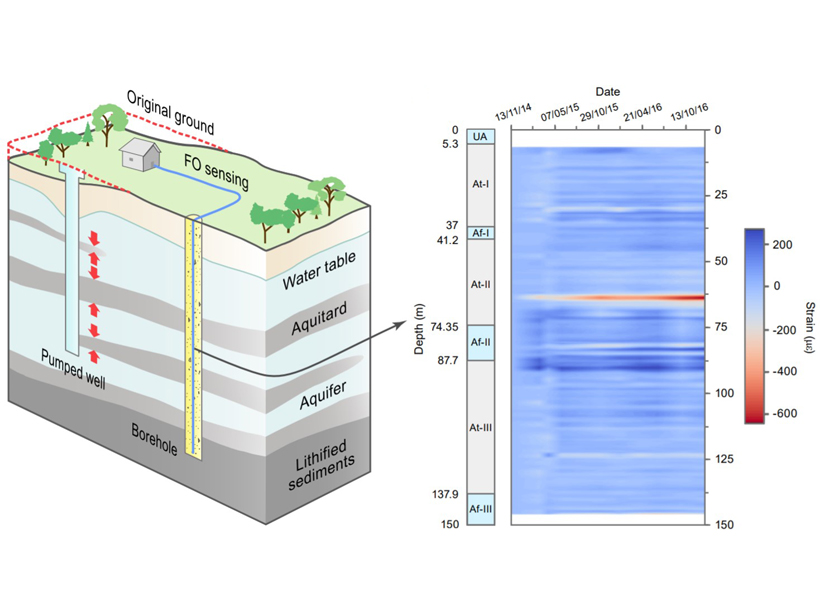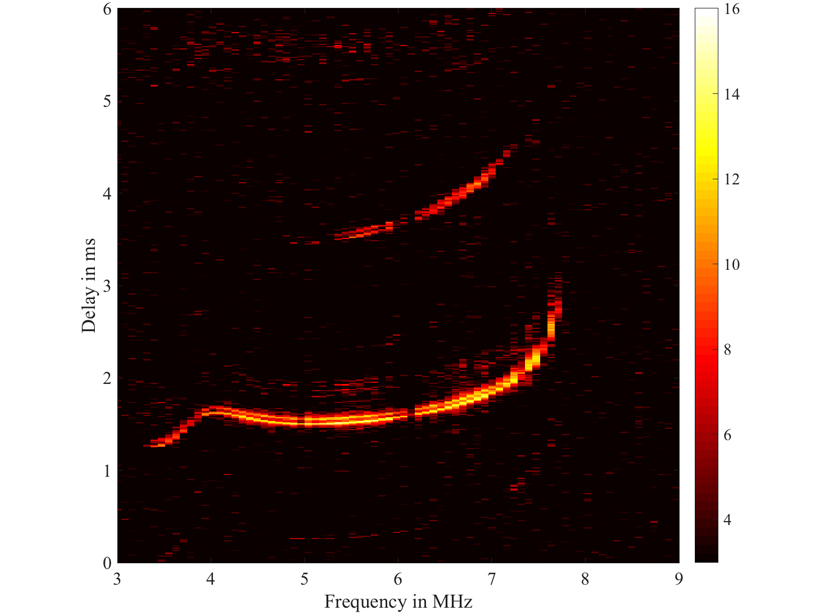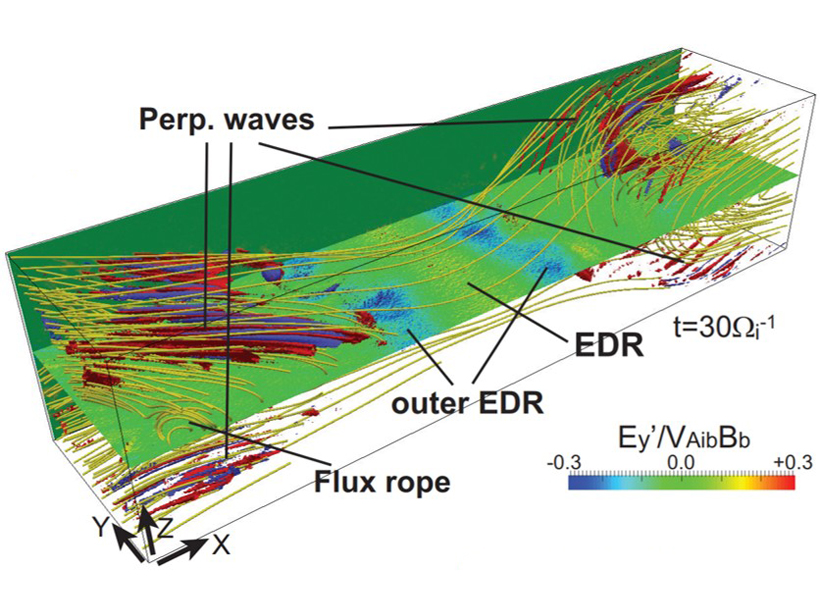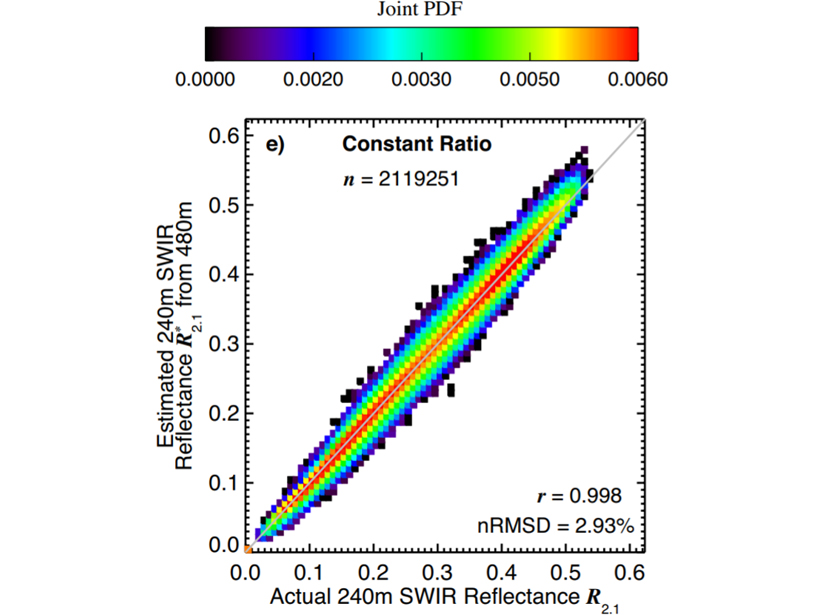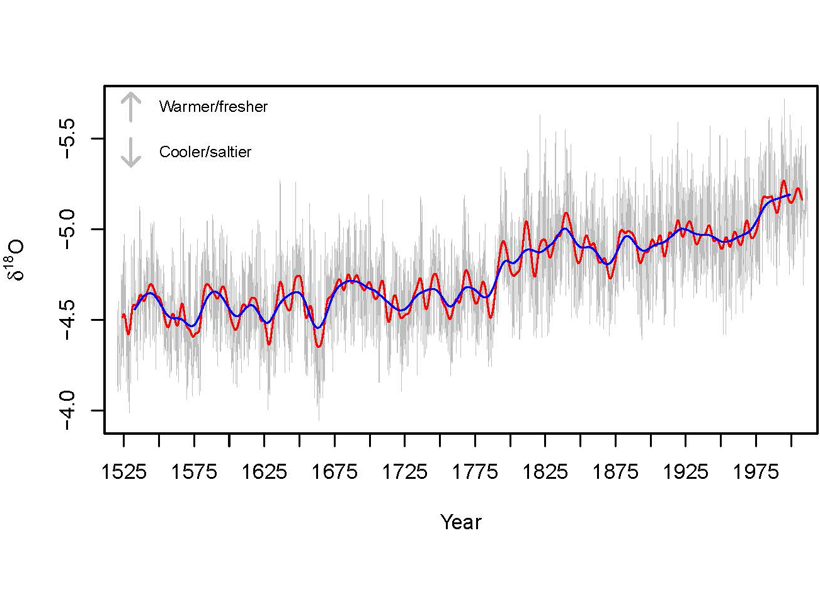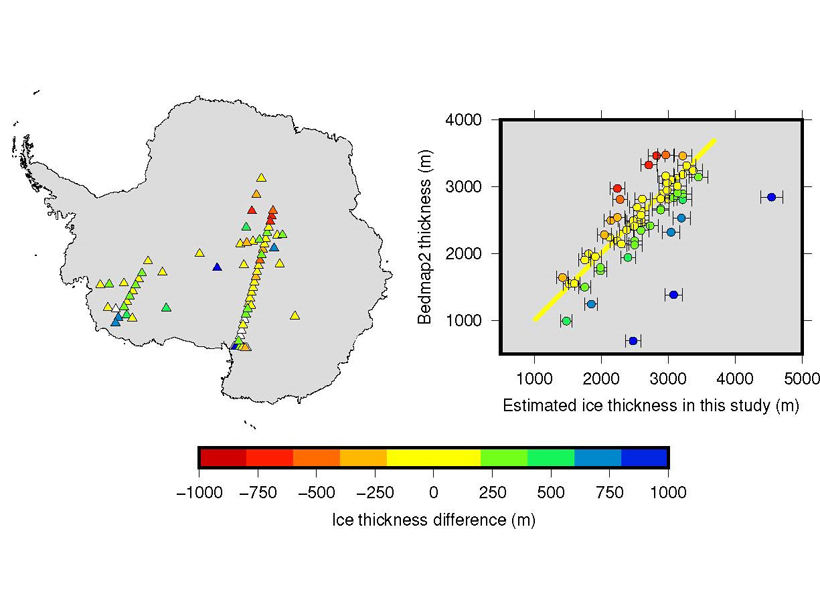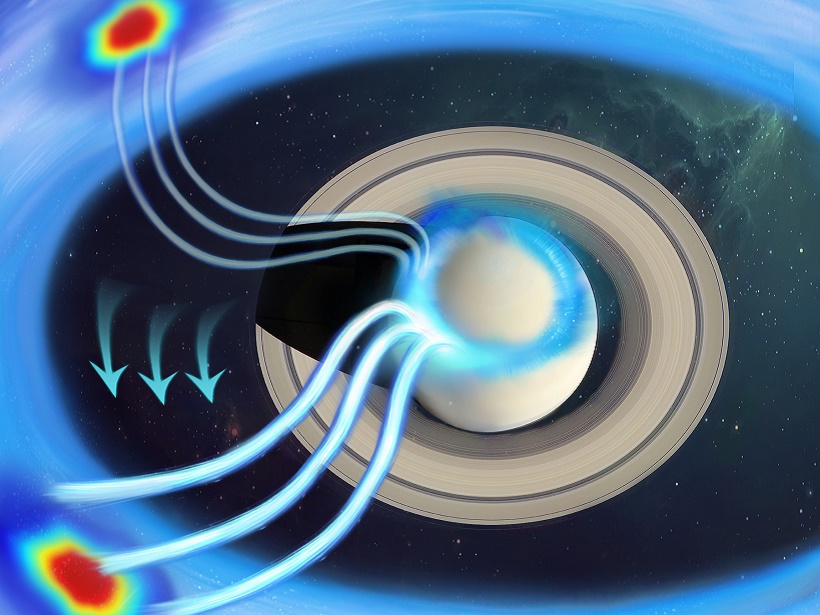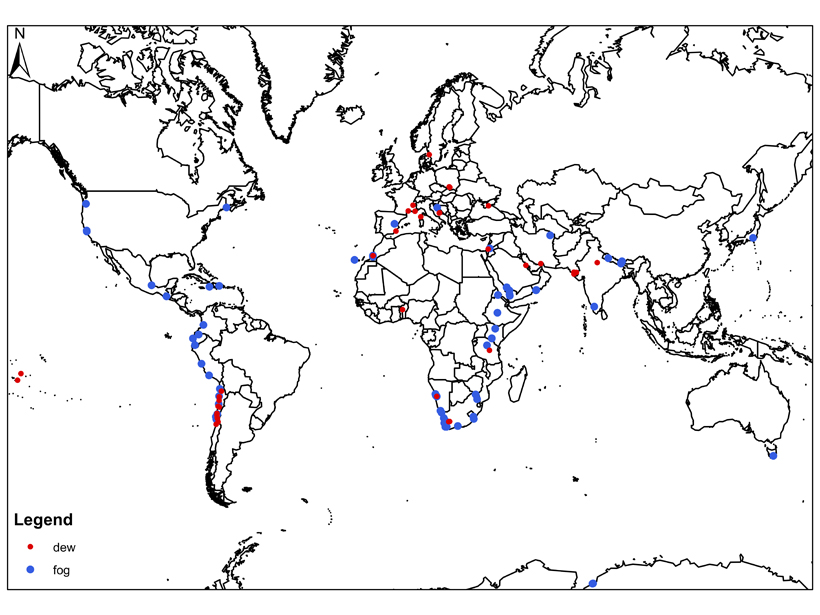The distributed deformation of buried materials is difficult to map, but a new approach is able to resolve vertical deformation over the length of a fiber optic cable.
Editors’ Highlights
High Resolution Imaging of Ionosphere by Lightning
The three-dimensional distribution of electron density in the Earth’s ionosphere could be obtained using the broadband radiation of naturally occurring lightning discharges.
Measuring the Magnetic Reconnection Rate in the Magnetotail
Both simulations and observations are used to measure the magnetic reconnection rate in the Earth’s magnetotail, suggesting that the rate is correlated with the intensity of a magnetic substorm.
Improving Retrievals for Partially Cloudy Pixels
Cloud retrievals for partly cloudy pixels might be able to be improved by using high-resolution samples in a visible to near-infrared band, which many satellite sensors offer.
The ILAMB System for Benchmarking Land Surface Models
An evolving set of tools helps land surface model developers optimize the realism of their parameterizations for the next generation of weather and climate models.
What American Samoan Corals Tell About El Niño’s History
Samoan corals record how patterns of warm/cool and more/less salty in the equatorial Pacific changed in space and time over the last 500 years.
New Method to Measure Ice Cap Thickness
Naturally generated seismic waves bouncing up and down through an ice sheet can be used to determine the thickness of the ice and monitor future changes in ice thickness.
Cassini Reveals a Missing Link on Saturn’s Rotating Aurora
The bright aurorae dancing in the sky are produced by charged particles traveling along the magnetic field lines from tens of planetary radii. By why do aurorae rotate at Saturn but not at Earth?
New Definition of Potential Spicity by the Least Square Method
A thermodynamic function of the potential spicity is defined and it is orthogonal to the potential density in the least square sense.
Fog Catching for Thirsty Locales
Many arid and semi-arid regions experience very little rainfall, but quite a bit of fog, which might be a viable source of drinking water.

